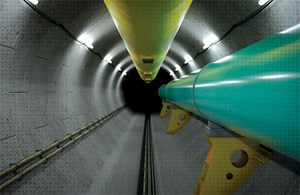Enbridge Line 5 reroute clears hurdle with Wisconsin DNR permit approval
Mary Holcomb, Digital Editor
(UI) — On Nov. 14, the Wisconsin Department of Natural Resources (DNR) issued an individual wetland and waterway permit for Enbridge’s proposed Line 5 pipeline relocation in Ashland and Iron counties. This decision follows a thorough review of state laws, public input, and the administrative record.
Enbridge's proposed relocation involves replacing a 41-mile segment of its 645-mile Line 5 pipeline with a new 30-inch diameter pipe running through Ashland, Bayfield, and Iron Counties.
Before construction can begin, Enbridge must secure all necessary federal, state, and local permits, including the DNR’s approval for construction-related activities affecting navigable waterways and wetlands. This approval comes with more than 200 conditions to ensure compliance with Wisconsin's wetlands and waterways standards.
Additionally, the DNR has granted coverage under its Wisconsin Pollution Discharge Elimination System (WPDES) General Permit for Construction Site Storm Water. This allows Enbridge to carry out land-disturbing activities related to construction, as long as erosion control and water quality measures are followed. Enbridge must also obtain approval from the U.S. Army Corps of Engineers, which is reviewing the project’s water quality certification.
The existing Line 5, operational since 1953, runs from Superior, Wisconsin, to Sarnia, Ontario, and includes a 12-mile segment through the Bad River Reservation. Enbridge’s proposal includes replacing 20 miles of pipeline, including the 12 miles within the reservation, with a new 41-mile segment routed outside the reservation’s borders.
In September, Enbridge agreed to forgo using a 2021 permit from Michigan’s Department of Environment, Great Lakes, and Energy (EGLE) for its Line 5 tunnel project and sought a new permit instead. This decision came amid ongoing concerns from Michigan’s Tribal Nations and environmental groups about the risks posed by the pipeline, which crosses the Straits of Mackinac, a critical area where Lake Michigan and Lake Huron meet.
The pipeline, which transports millions of gallons of crude oil and natural gas daily, has been controversial due to its location in this sensitive environment.
Following a 2018 anchor strike that damaged the pipeline, Enbridge proposed relocating the pipeline around the Bad River Reservation and into a concrete tunnel under the lakebed to mitigate spill risks.
The construction would require a 120-foot-wide temporary construction right-of-way (ROW), with a permanent 50-foot-wide ROW for the new pipeline, plus additional space for construction equipment and materials.
Related News
From Archive

- Glenfarne Alaska LNG targets late-2026 construction start for 807-mile pipeline project
- U.S. water reuse boom to fuel $47 billion in infrastructure spending through 2035
- $2.3 billion approved to construct 236-mile Texas-to-Gulf gas pipeline
- Major water pipe break in Puerto Rico hits over 165,000 customers
- Potomac River Tunnel project enters construction phase beneath Washington, D.C.
- Pennsylvania American Water launches interactive map to identify, replace lead water service lines
- Trump's tariffs drive $33 million cost increase for Cincinnati sewer project
- Utah city launches historic $70 million tunnel project using box jacking under active rail line
- Tulsa residents warned after sewer lines damaged by boring work
- Fatal trench collapse halts sewer construction in Massachusetts; two workers hospitalized




Comments